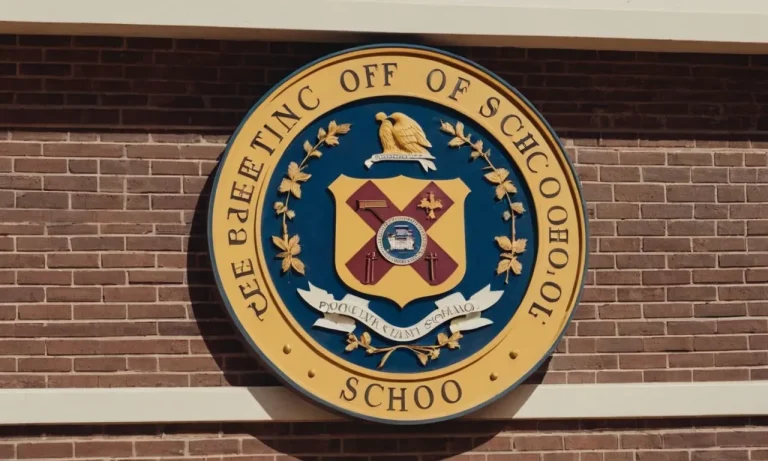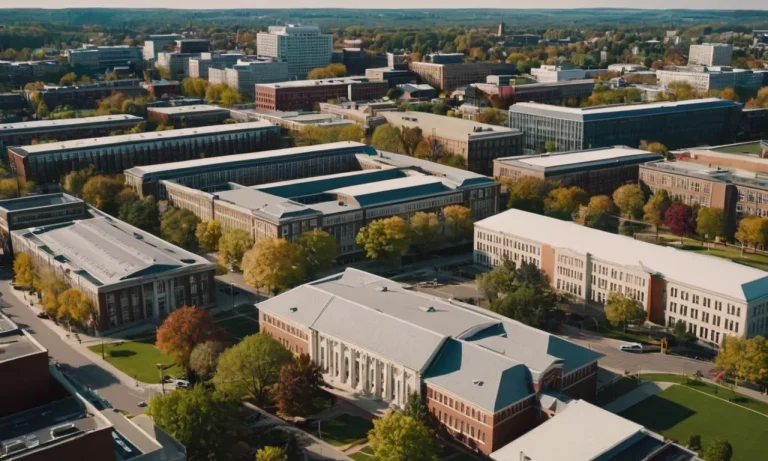Changing schools can be a daunting prospect, but sometimes it’s the best decision for a student’s academic and personal growth. Whether it’s due to a family relocation, dissatisfaction with the current school, or a desire for a fresh start, transferring high schools can open up new opportunities and experiences.
If you’re short on time, here’s a quick answer to your question: Some good reasons to transfer high schools include better academic programs, extracurricular opportunities, school culture and environment, safety concerns, and personal or family circumstances.
In this comprehensive article, we’ll explore the various factors that may prompt a high school transfer, the potential benefits, and the steps involved in the process. We’ll also provide insights from experts and real-life experiences to help you make an informed decision.
Academic Opportunities
One of the most compelling reasons to transfer to a new high school is the potential for expanded academic opportunities. Many students find themselves limited by the course offerings or specialized programs at their current institution.
By transferring, they can gain access to a wider range of educational experiences that better align with their academic goals and interests. Let’s explore some of the key academic opportunities that might motivate a high school transfer.
Advanced Placement (AP) and Honors Courses
Advanced Placement (AP) and honors courses are designed to challenge academically talented students and provide them with a rigorous curriculum that can prepare them for college-level work. These courses often cover material in greater depth and at a faster pace than regular classes.
According to CollegeBoard, which administers the AP program, students who take AP courses and exams are more likely to earn higher GPAs in college and have greater academic success overall. However, not all high schools offer a comprehensive selection of AP or honors courses.
By transferring to a school with a broader range of these advanced offerings, students can explore their academic interests more fully and potentially earn college credits while still in high school.
Specialized Programs and Academies
Many high schools have specialized programs or academies that focus on specific areas of study or career paths. These programs often provide a more immersive and focused educational experience, with dedicated resources, specialized faculty, and unique learning opportunities.
Examples include STEM (Science, Technology, Engineering, and Mathematics) academies, performing arts programs, international baccalaureate (IB) programs, and career-focused academies like those for health sciences or business.
By transferring to a school with a specialized program that aligns with their interests and goals, students can benefit from a tailored curriculum, hands-on experiences, and a community of like-minded peers.
Better Resources and Facilities
The quality of resources and facilities can vary significantly between high schools, and this can have a substantial impact on a student’s educational experience. Some schools may have access to state-of-the-art labs, well-stocked libraries, cutting-edge technology, and modern facilities that support a wide range of academic pursuits.
Others may be more limited in their resources. By transferring to a school with better resources and facilities, students can enjoy an enriched learning environment that supports their academic growth and development.
According to a study by the EdWeek Research Center, students in schools with better facilities tend to perform better academically and have higher attendance rates.
Ultimately, the decision to transfer high schools should be carefully considered, as it can have a significant impact on a student’s academic journey and future prospects. By taking advantage of the expanded academic opportunities available at a new school, students can position themselves for greater success both in high school and beyond.
Extracurricular Activities and Sports
Transferring to a new high school can open up a world of exciting opportunities for students to explore diverse extracurricular activities and sports programs. These opportunities not only enrich the overall educational experience but also foster personal growth, leadership skills, and a sense of community.
Diverse Clubs and Organizations
One of the most compelling reasons to transfer high schools is the chance to join a wide array of clubs and organizations that align with your interests and passions. From academic clubs like National Honor Society to cultural organizations, artistic pursuits, and community service groups, the options are truly endless.
These clubs provide a platform for students to engage with like-minded individuals, explore new hobbies, and develop valuable skills that can benefit them both academically and personally. According to a study by the National Center for Education Statistics, students involved in extracurricular activities tend to have higher GPAs and are more likely to pursue higher education.
Competitive Athletic Programs
For student-athletes, transferring to a new high school can open doors to competitive athletic programs and opportunities to excel in their chosen sports. Many high schools boast top-notch facilities, experienced coaches, and rigorous training regimens that can help athletes reach their full potential.
Participating in sports not only promotes physical fitness and teamwork but also instills valuable life lessons in discipline, perseverance, and resilience. A study by the National Federation of State High School Associations revealed that over 7.9 million students participate in high school sports each year, highlighting the immense popularity and significance of these programs.
Leadership Opportunities
Transferring to a new high school can open up a wealth of leadership opportunities for students. From student government organizations to peer mentoring programs and event planning committees, these platforms allow students to develop essential skills in communication, problem-solving, and decision-making.
Leadership roles not only boost confidence and self-esteem but also provide valuable experiences that can be highlighted on college applications and resumes. According to a survey by the College Board, 58% of college admission officers consider leadership experience an important factor in the admission process.
Don’t miss out on the chance to shine as a leader and make a lasting impact on your school community!
School Culture and Environment
When considering transferring high schools, the school’s culture and environment play a crucial role in shaping a student’s overall experience. A positive learning atmosphere can significantly impact academic performance, personal growth, and overall well-being.
According to a study by the National Center for Education Statistics, students in schools with a positive climate tend to have higher academic achievement and better attendance rates.
Positive Learning Atmosphere
A positive learning atmosphere fosters a sense of belonging, encourages intellectual curiosity, and promotes personal growth. It’s an environment where students feel safe, respected, and supported in their academic journey.
In such an atmosphere, students are more likely to take risks, ask questions, and actively engage in the learning process without fear of judgment or ridicule. A nurturing and inclusive school culture can make a significant difference in a student’s academic success and personal development.
Diversity and Inclusivity
In today’s interconnected world, it’s essential for students to be exposed to diverse perspectives and backgrounds. A school that embraces diversity and promotes inclusivity can broaden students’ horizons, fostering empathy, cultural awareness, and a deeper understanding of different viewpoints.
According to a report by the American Psychological Association, students in diverse learning environments have improved critical thinking skills, increased motivation, and better preparation for future careers in a globalized society. 😊
Student-Teacher Relationships
Strong student-teacher relationships are a cornerstone of a positive school culture. When students feel valued, respected, and supported by their teachers, they are more likely to be engaged in their learning and motivated to succeed.
Positive student-teacher relationships can lead to higher academic achievement, improved attendance, and better overall well-being. According to a study by the Education Week Research Center, 88% of teachers believe that building strong relationships with students is essential for academic success.
👏
Personal and Family Circumstances
Sometimes, the decision to transfer high schools is driven by personal or family circumstances that extend beyond academic or extracurricular considerations. These situations can be complex and deeply personal, but it’s essential to understand that they are perfectly valid reasons for seeking a change in educational environment.
Relocation or Change of Residence
One of the most common reasons for transferring high schools is a change of residence. Families may need to relocate due to job opportunities, financial considerations, or other personal reasons. In such cases, transferring to a new school closer to the new home becomes a necessity.
According to a study by the U.S. Census Bureau, approximately 11.2% of Americans moved in 2021, with many of those moves involving families with school-aged children.
Bullying or Safety Concerns
Unfortunately, bullying and safety concerns are all too common in schools, and they can have a profound impact on a student’s well-being and academic performance. If a student is experiencing bullying, harassment, or feels unsafe in their current school environment, transferring to a new school may be the best solution.
Organizations like StopBullying.gov provide valuable resources and support for families navigating these difficult situations. It’s important to prioritize a student’s emotional and physical safety above all else.
Special Needs or Accommodations
Some students may require specialized educational accommodations or support services that their current school cannot adequately provide. In these cases, transferring to a school better equipped to meet their unique needs can be a game-changer.
For example, a student with a learning disability or physical impairment may benefit from a school with dedicated resources and staff trained to provide the necessary accommodations. According to data from the National Center for Education Statistics, approximately 14% of public school students in the U.S. receive special education services.
Ultimately, the decision to transfer high schools due to personal or family circumstances should be made with careful consideration and guidance from school administrators, counselors, and other professionals.
It’s a significant decision that can have far-reaching implications, but in many cases, it can provide a fresh start and a better educational environment for the student. Remember, your child’s well-being and success should always be the top priority. 😊
Conclusion
Transferring high schools can be a significant decision that impacts a student’s academic journey and personal growth. By carefully considering factors such as academic opportunities, extracurricular activities, school culture, and personal circumstances, families can make an informed choice that aligns with their child’s needs and aspirations.
It’s important to research potential schools thoroughly, visit campuses, and engage with current students and faculty to gain a comprehensive understanding of the school’s offerings and environment. Additionally, seeking guidance from counselors, teachers, and educational experts can provide valuable insights and support throughout the transfer process.
Ultimately, the decision to transfer high schools should be based on a holistic evaluation of the student’s unique circumstances and goals. With careful planning and an open mind, a high school transfer can pave the way for a more fulfilling and enriching educational experience.






